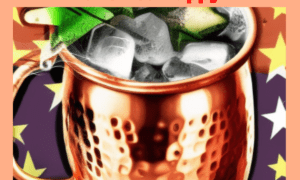 As the sun begins to set on Passover eve, Jewish families around the world come together to celebrate the holiday’s beginning. Passover is a time to remember the exodus from Egypt and the liberation from slavery. The mood of the holiday is one of gratitude and reflection, as families retell the story of the Israelites’ journey to freedom. They gather around the seder plate, filled with symbolic foods, and recite prayers and readings that have been passed down through generations. From the bitter herbs to the matzah, each element of the seder tells a story of their history and perseverance. The beginning of Passover marks not only a historic event, but a time to honor tradition and family. he holiday typically begins on the 15th day of the Hebrew month of Nisan, which usually falls in March or April. Passover is steeped in tradition, with families coming together to share meals of matzo and bitter herbs, and retelling the story of the exodus through the reading of the Haggadah. It’s a time for reflection, remembrance, and renewal, and a reminder of the strength and resilience of the Jewish people.
As the sun begins to set on Passover eve, Jewish families around the world come together to celebrate the holiday’s beginning. Passover is a time to remember the exodus from Egypt and the liberation from slavery. The mood of the holiday is one of gratitude and reflection, as families retell the story of the Israelites’ journey to freedom. They gather around the seder plate, filled with symbolic foods, and recite prayers and readings that have been passed down through generations. From the bitter herbs to the matzah, each element of the seder tells a story of their history and perseverance. The beginning of Passover marks not only a historic event, but a time to honor tradition and family. he holiday typically begins on the 15th day of the Hebrew month of Nisan, which usually falls in March or April. Passover is steeped in tradition, with families coming together to share meals of matzo and bitter herbs, and retelling the story of the exodus through the reading of the Haggadah. It’s a time for reflection, remembrance, and renewal, and a reminder of the strength and resilience of the Jewish people.
HISTORY OF PASSOVER
Passover is a significant and richly symbolic holiday in Judaism that commemorates the Israelites’ liberation from slavery in ancient Egypt. With its roots dating back to roughly 1300 BCE. Passover is one of the oldest and most significant Jewish holidays. It commemorates the exodus of the Israelites from slavery in Egypt and the beginning of their journey towards the promised land.
FIVE THINGS ABOUT PASSOVER
- During the celebration of Passover, leavened bread is avoided in order to remember the haste in which the Jews fled Egypt and did not have time to let their bread rise. This symbolism reminds the Jewish community of their history and the hardships that they faced. While leavened bread is avoided during Passover, it is a common part of the Jewish diet throughout the rest of the year. Challah, a braided leavened bread, is often eaten during Friday night Shabbat to honor the celebration of the Sabbath. The significance of leavened bread in Jewish culture is rooted in tradition, history, and spirituality.
- Another fascinating aspect of Passover is the Seder, a ritual meal that tells the story of the Israelites’ liberation from slavery in Egypt. The Seder includes the recitation of the Haggadah, a special book that outlines the customs and traditions of the holiday.
- Passover is also a time for deep reflection and family bonding, as individuals spend time with loved ones and engage in spiritual practices like cleaning and purification rituals.
- There are a variety of symbols associated with Passover, such as the roasted lamb shank bone and the bitter herbs, that help to impart a sense of meaning and purpose to the holiday festivities.
- Another intriguing feature is the Afikomen game, where the children search for the hidden matzah, which is meant to teach them about the exodus’s importance in Jewish history.
HOW TO CELEBRATE PASSOVER
- Learn how to celebrate Passover by Jewish Unpacked (Highly Recommend!)
- Bon Appetit’s 73 Passover Recipes.
- Purchase Passover gifts, games, and toys for celebrating.
- Enjoy Passover music.
- If you love the article image, purchase it on these fun products on Zazzle!
Note: If the above links do not direct you to the appropriate referral on the first try, return to the article and try again.
Do you have any ideas about how to celebrate this day? Please share them!












